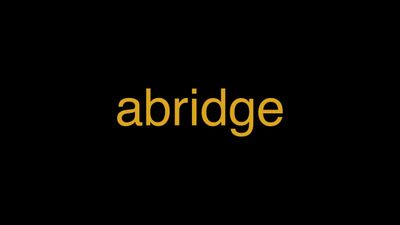

You also need to use it with some care and judgement. Treat it as another part of your spokesperson’s toolkit. If you are going to use the technique on every question then you will sound evasive and you will not achieve that natural-sounding conversation you should be striving for. If you follow this advice, in most cases, the journalist will let you carry on as they know this is good for their audience. There are many blogs on that topic within these pages but it’s also important that you work closely with your comms and media team to understand who you are talking to. This, of course, means truly understanding the journalist's audience and what they are interested in. Once you have bridged successfully and got back to your message, the key is to then to develop your answers by telling a story or giving an example which supports it and is relevant to your target audience. Practice using the technique before you do any interviews and you will begin to get a feel for the phrases that feel right for you. You don’t want to find yourself sounding scripted or saying something that takes away from your authenticity. The key thing with bridging and using the technique well is to use phrases you are comfortable with and that sound like something you would say. The other important point to note with these phrases is that they are just examples and not a template. But whatever you decide, there must be that initial answer or acknowledgement of the question. You could answer the question in a little more detail than we have here, depending on how comfortable you are with it, or you could stick to the short answer approach we took. In all these examples, the question is acknowledged or briefly answered, before we use bridging to get away from the challenging issue to the message we want to get across.Īnd that acknowledgement is imperative because without it you will sound evasive – like some of the interviewees we have highlighted in recent editions of this media training blog - and the journalist is far more likely to come back and repeat the question. “That doesn’t have to be the case, but what we do need to do now is…” “That is important, but we think that at the moment the focus should be on…” “I believe/don’t believe that’s the case, but another thing to remember is that…” “I don’t have that information to hand, but what I have found is that…” “I agree/don’t agree, but what I think a lot of people don’t know is that…” “That’s an interesting observation, but I think the it’s important we don’t forget that…” “I’m sure/not sure that’s the case, but I would add that…” “I can understand why people may have those concerns, but our research shows that…” “That’s not something I’m an expert on, but what I do know is that…” “I can’t speak on his / her behalf, but what I do know is that…” “I have heard that, but keep in mind that…” “That’s a good point, but let’s not forget that…” “I’m sorry, I don’t know, but what I can tell you is that…”
Abridge sentences how to#
Well, before we go into how to use it in more detail, let’s start by looking at some bridging phrases you could use. When it is used well, it sounds natural and it can be difficult for the audience to detect. It enables a spokesperson to respond to difficult or challenging questions which they don’t want to answer, by using a form of words to move the conversation back to the topic they want to talk about. If you’ve read this media training blog before, or attended some of our training courses, you’ll know that the best way to handle these questions is through using the bridging technique.

However, simply trying to avoid these questions is not a good look. Wider issues are brought into the conversation and the interview can move to some particularly difficult areas. This often happens in media interviews, particularly, but not always, at the end.

The spokespeople in these examples had both found themselves in the position of facing questions that were not directly related to the topic of the interview and that they didn’t want to answer. Huawei and the question that keeps tying its spokesperson in knots


 0 kommentar(er)
0 kommentar(er)
